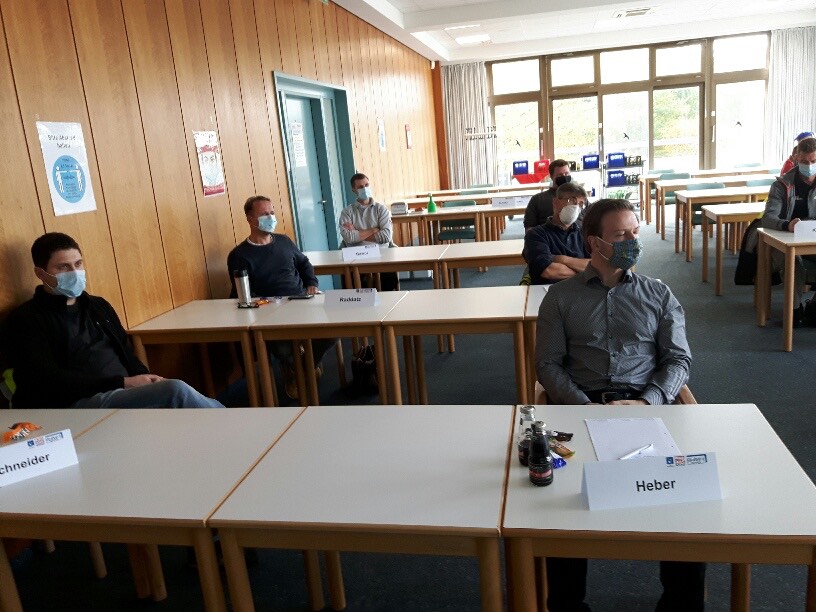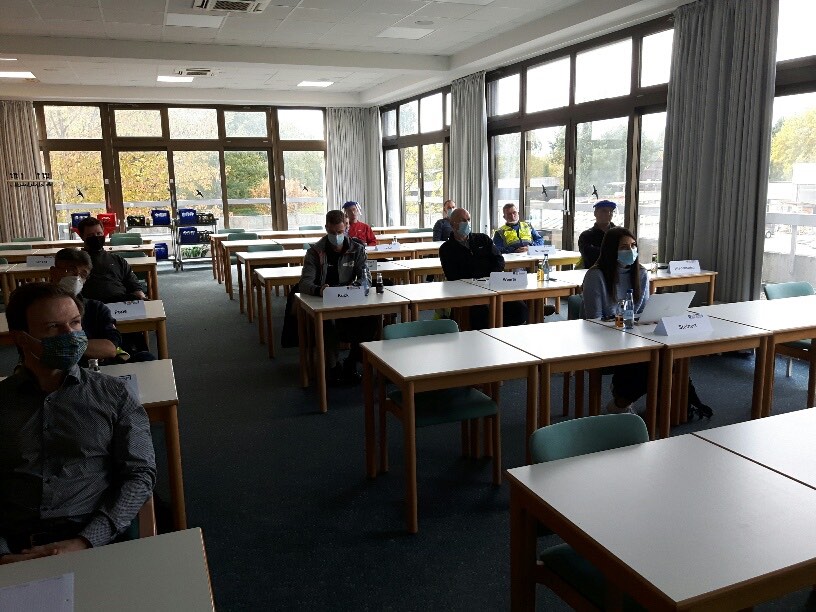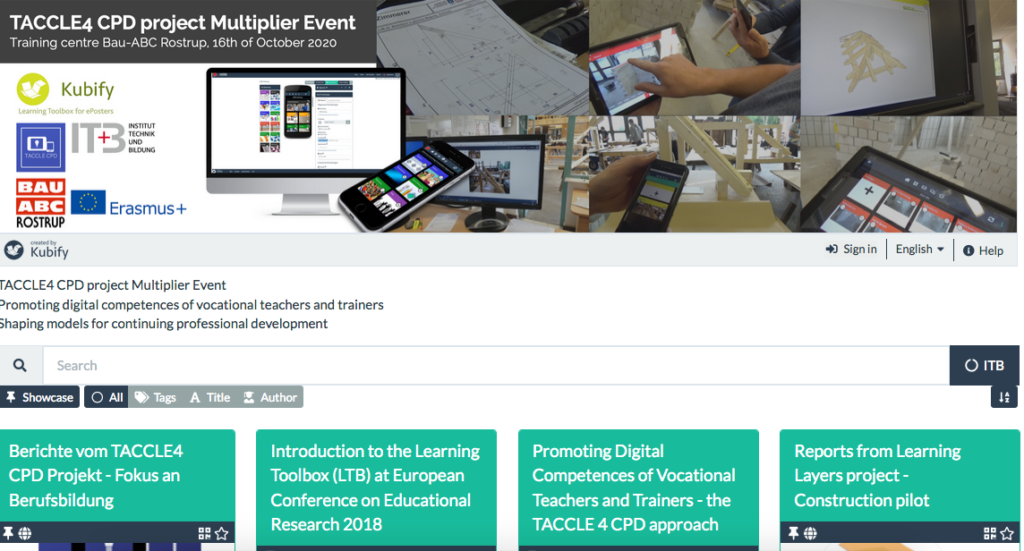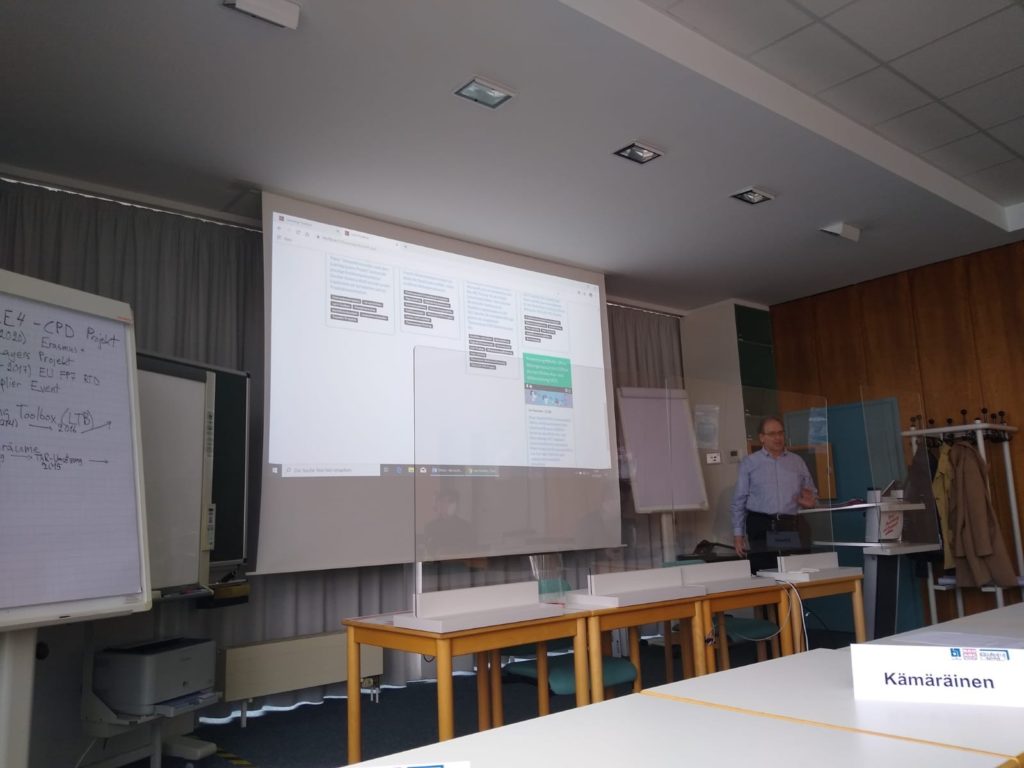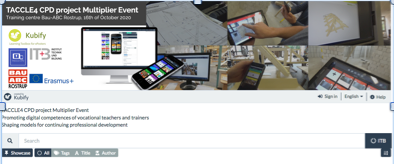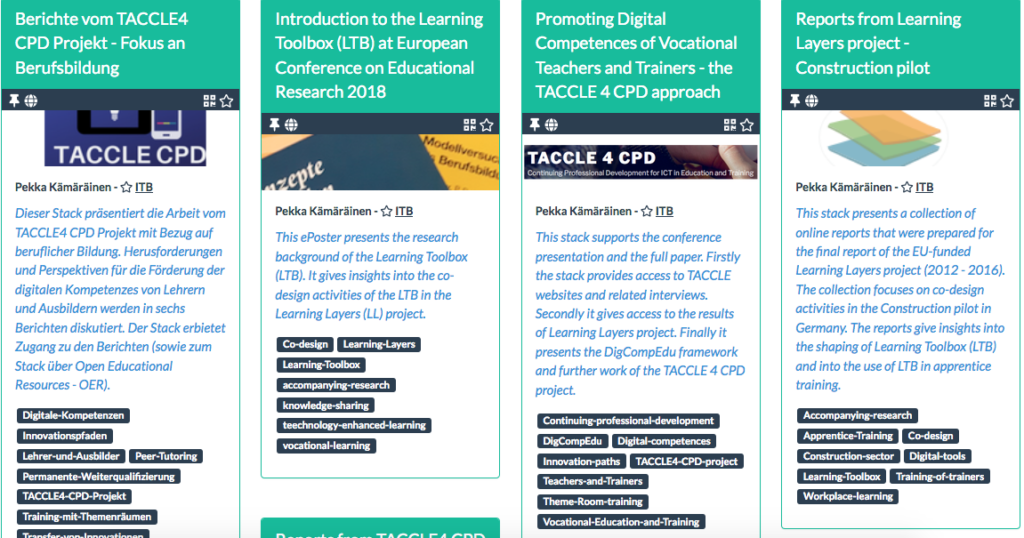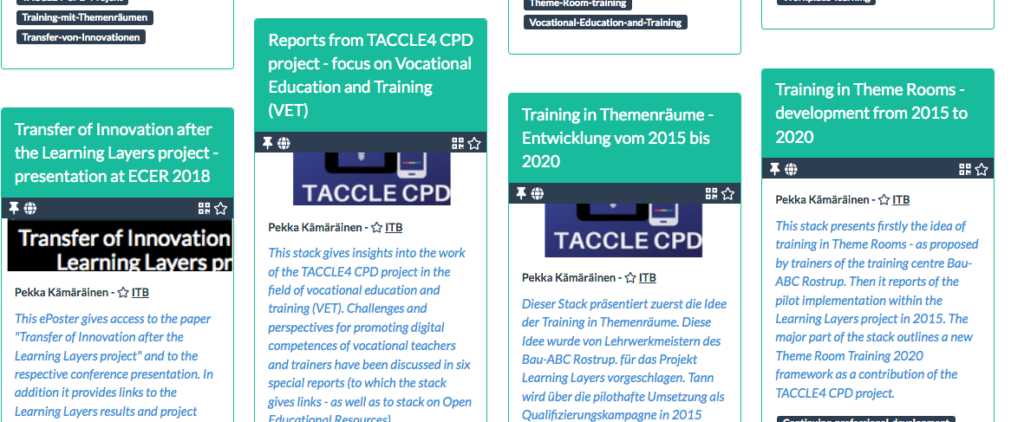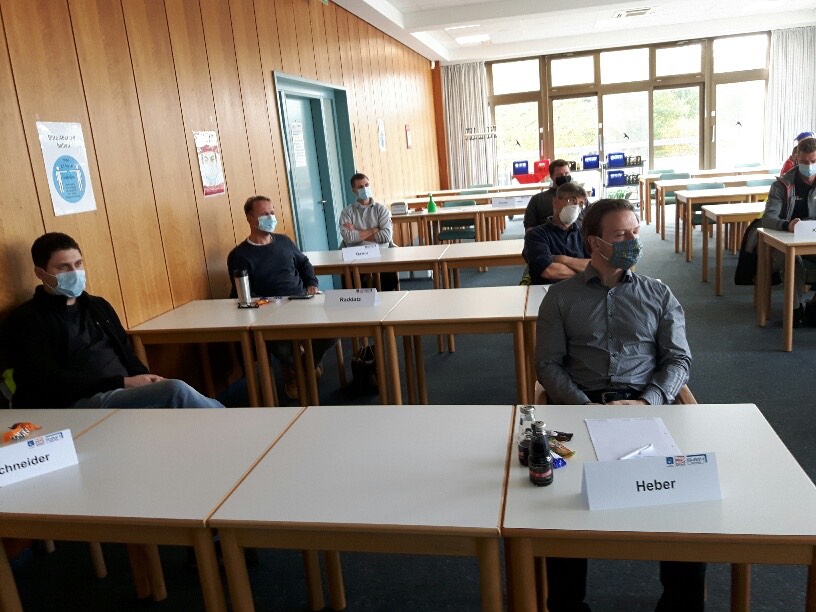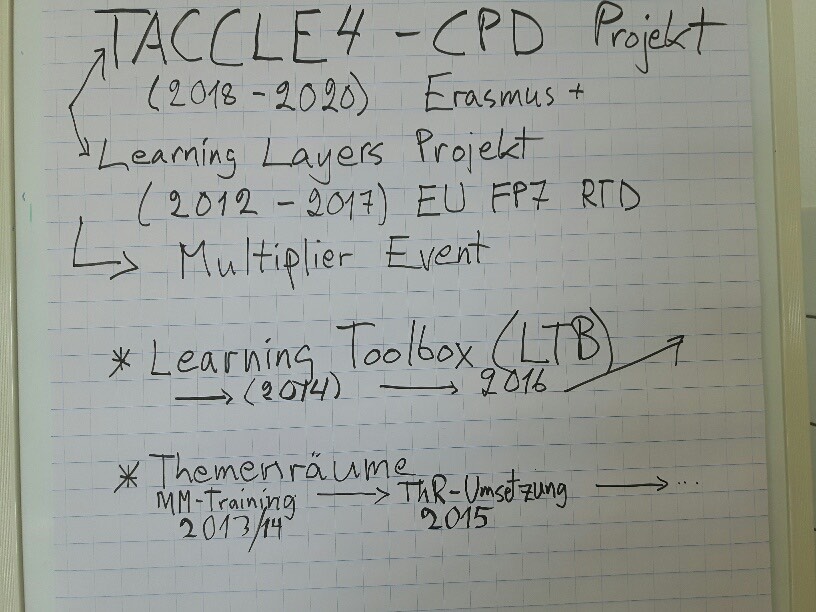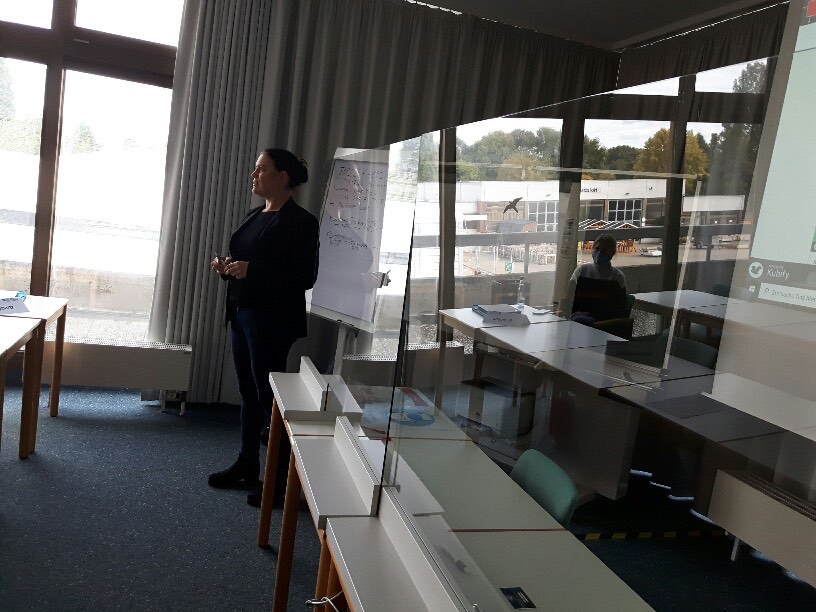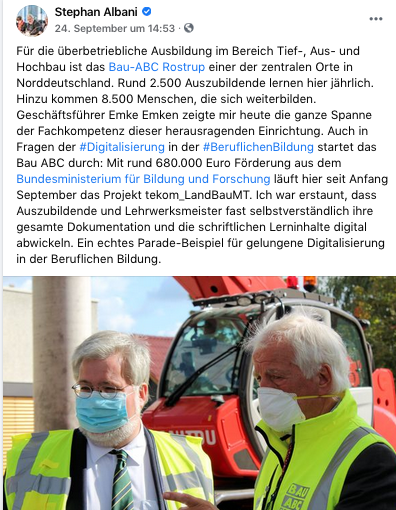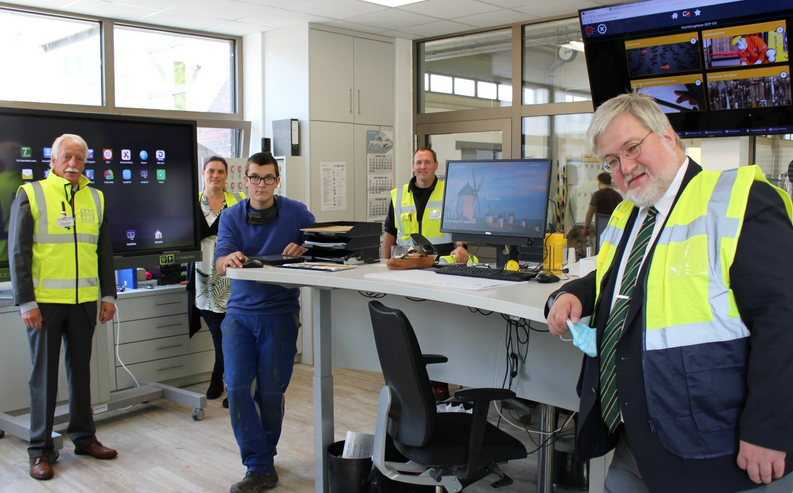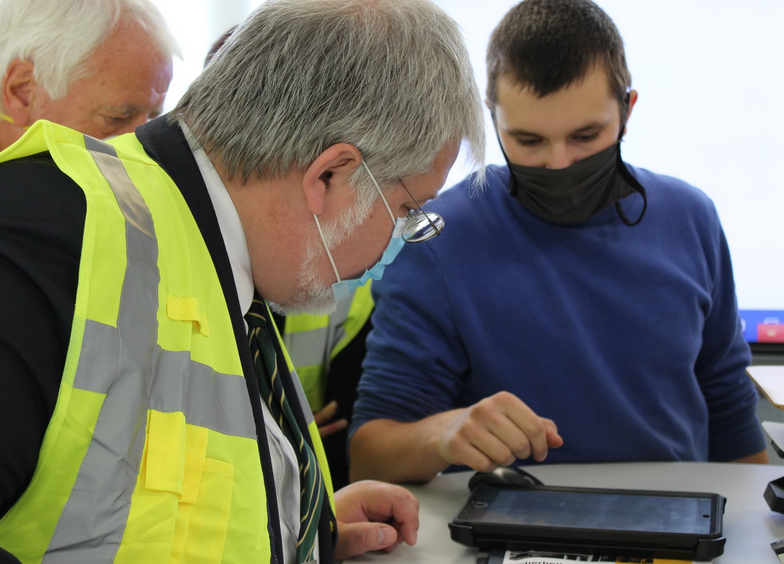The Learning Toolbox (LTB) scenario for working with an integrative toolset in vocational learning contexts
Target audience:
School and training managers (leaders; coordinators, team leaders etc.) as well as educational and in company actors, such as trainers or IT admins or HRD managers, VET teachers as well as dual students, trainees or apprentices.
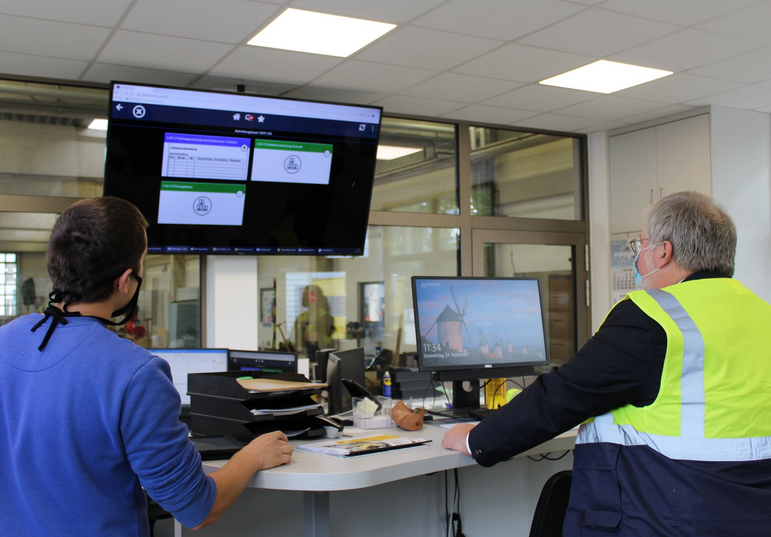
Introduction
First the background of this scenario will be described first and followed the scenario develops as well as the key results including the assessment of the scenario.
Research and development in Personal Learning Environments has made considerable progress in recent years. Yet although often acknowledging the importance of informal learning is rising but research focuses largely just on formal education. Far less attention has been paid to work based and work integrated learning and still less to the particular context of learning at work in Small and Medium Enterprises (SMEs) (Gustavsen, Nyhan, Ennals, 2007).
The Learning Layers project (2012-2016) developed innovative digital media with partners from professional practice and science. One of these applications is the Learning Toolbox: the smart combination of work and learning in everyday work. The Learning Toolbox (LTB) scenario enables you to put together your own small apps on specific topics.
Conceptual introduction
The scenario supports largely informal and mobility based learning processes across different learning spaces such as the training centre, the workplace within an learning company, the private sphere of the learner at home or on a move as well as the VET school/college. Therefore three Layers focus on interaction under three types of levels involved in informal learning process:
- Layer that invites informal interactions with people across enterprises in the cluster, scaffolds workplace learning by drawing on networks of learners and keeps these interactions persistent so that they can be used in other contexts by other persons,
- Layer that supports creation, maturing and interaction with learning materials as boundary objects and guides this processes by tracking the quality and suitability of these materials for learning, and
- Layer that situates and scaffolds learning support into the physical workplace and captures people’s interactions with physical artefacts inviting them to share their experiences with them.
All three interaction layers draw on a common Social Semantic Layer that ensures learning is embedded in a meaningful context. This layer captures and emerges the shared understanding in the community of learners by supporting the negotiation of meaning. To achieve this, the social semantic layer captures a number of models and lets the community evolve these models through PLEs in a social negotiation process.
Work based Personal Learning Environments will be based on a series of Learning Layers. In building heavily on existing research on situated and contextualised learning, Learning Layers provide a meaningful learning context when people interact with people, digital and physical artefacts for their informal learning. Learning Layers provide a shared conceptual foundation independent of the personal tools people use for learning.
The scenario was planned, developed and tested within the building and construction industry. The scenario illustrates how this technologies was made operational in the regional North West German building and construction cluster.The Learning Toolbox (LTB) was the main end product of a co-design process in the EU-funded Learning Layers project. The LTB was shaped in a participative and iterative design process – involving trainers and other practitioners in construction sector.
Process of developing the Learning Toolbox
The process that led to the making of the integrative toolset was one of the design activities launched in the beginning of Learning Layers project. Originally the design idea was to digitize training and learning materials for apprentice training. However, a new approach was found and the process started developing a toolset to access relevant web resources, share digital contents and share information on training and learning.
In the context of apprentice training the responsible trainers prepared for their groups of apprentices an LTB-stack. The stack consists of tiles with which the users share documents, give access to web links and manage communication. The learners receive instructions, worksheets, reporting forms and permissions to upload photos (as evidence for interim results) or video’s.
Co-design and search for appropriate tools: In the Construction pilot the co-design work was started with interviews and participative workshops that mapped potential uses of digital tools that could support construction work and related learning. In several iterations the design idea was transformed into the shaping of an integrative toolset (mobile app) that provides access to web resources, project documents and work- and learning-related contacts (“Learning Toolbox”). This process was shaped as a strongly R&D dialogue that involved construction sector trainers, technical partners and accompanying researchers.
a. Training the trainers: In the beginning phase of the project the stakeholder interviews and participative workshops had given a picture of a non-transparent landscape of stand-alone l tools and apps. According to the trainers some of these could not be considered appropriate as support for work-related learning. Therefore, a short multimedia training campaign was launched in Bau-ABC. The aim was to support the trainers’ digital literacy and their capability to work independently with multimedia and web resources. The key results of this phase were the trainers’ blogs that they used as trade-specific repositories for training materials. Later on, a broader training model, the “Theme Room” training was initiated by the trainers of Bau-ABC. This model was implemented as a training campaign for all trainers of Bau-ABC in November 2015.
b. Final development and pilot testing of Learning Toolbox: After a search period (and two iterations in the co-design activities) the Construction pilot focused on the development of the Learning Toolbox (LTB) as its key activity. The LTB was designed as an integrative digital toolset to support vocational and work process-oriented learning. In the final year of the project in reached the stage of maturity and was pilot tested in Bau-ABC with a limited number of trades. In this phase the responsible trainers of Bau-ABC introduced new learning projects for apprentices – to be completed with the help of the LTB. Some of the trainers developed joint projects for neighbouring trades or tutored their fellow colleagues how to use LTB in their training for groups of apprentices who had already started using LTB. By the end of the LL project there was enough practical experience (and documented evaluation material) to conclude that the LTB was ready to be used on a wider scale.
Results of assessment/evaluation including pilot testing
The pilot testing of the Learning Toolbox was the concluding activity of the Construction pilot of the Learning Layers project. It was the crucial test, whether the project had developed a viable and usable product. And here the key issue was, whether it was helpful both for the trainers (in delivering instructions and learning materials) and for the apprentices (in working with their training projects and in documenting their learning results). Moreover, it was of importance that the trainers could prepare their own designs with the Learning Toolbox and that these were considered useful by the apprentices.
The key result of the pilot test was that the Learning Toolbox proved to be a usable and viable product. The trainers were in the position to set their own pedagogic accents by managing the amount of material that was available at different phases of learning. They were also ready to expand the access to resources according to the learners’ progress and capability to produce their own solutions. A general satisfaction to this was echoed in the workshops of apprentices that gave feedback of the piloting.
The main success factor was the previous project history with the co-design process and with the training activities. In addition, the programmed toolset was made as user-friendly as possible (given the limited time that had been available for its development).
The key limitation to wider transfer was the fact that the project came to an end shortly after this pilot-testing phase. Thus, the efforts to launch successor activities coincided with gaps in project funding and were not linked to similar accompanying research activities as during the project. Therefore, there is very little documentation on the transfer-promoting activities and of the pedagogic and organisational issues that have come up in the new user-organisations. In building ABC Rostrup e.g. Individual learning tasks are linked to the LTB in such a way that trainees can work on them independently and review their knowledge with quizzes.
Using Learning Toolbox (LTB) in other working and learning context:
A particular use case was provided by an architect was active as a construction site manager. For this site a stack was prepared to update construction plans, to inform the contractors and to alert them to recent changes in schedules. This helped to manage the coordination between different craft trade companies on the construction site. This example provided a basis for follow-up initiatives to use LTB in other construction companies.At the North German Center for Sustainable Building in Verden, i.a. an LTB app provides visitors with information about the sustainable building concept. At the ITB, the LTB was used on a mobile basis to make knowledge more interactive for employees before, during and after the retreat.
The handling of the LTB was flanked by extensive multimedia training for users. Accompanying research was carried out during the campaigns so that they are visible to everyone as a collaborative working method and how the exchange of knowledge in professional forums is to be structured.
Scenario Objectives
The goal of Technology Enhanced Learning approach underlying this scenario is to facilitate the development of knowledge and learning and their transfer between the learning locations as well as the different contexts and specialist areas. The following number of critical issues are examined in the Learning Layers scenario, in particular the character of learning and the application of knowledge in the workplace, as well as the interactions with physical artifacts, like machinery, computers and other technical materials:
- The way in which new knowledge develops and is exchanged, within and between the “learning organizations” in production companies and training centers as well as in Vocational schools.
- Under which conditions a mobile learning and working environment is taking up and can relate the different dimensions of the known-what, known-how and known-why in order to enable skilled workers, trainees and apprentices to make better-informed decisions in planning, implementation and implementation of the control of the work tasks.
In view of the importance of specialist knowledge, professional practice communities and the need to create a holistic learning environment, the processes of shaping the immediate users (trainee, master, etc.) are very important for this scenario. Even if three learning locations – vocational school, inter-company training center and training company – will always be difficult to achieve coordinated cooperation.
Resources and more information
Attwell, G., Deitmer, L., Heinemann, L., Kämäräinen, P.; Developing PLEs to support work practise based learning in: e learning papers 35, 2013
Eraut, M., Hirsch, W. 2007: The Significance of Workplace Learning for Individuals, Groups and Organisations Oxford & Cardiff, UK: SKOPE Research Centre.
Deitmer, L., Heinemann, L., 2010: Innovation through evaluation and quality development of in-company training and workplace learning In: Conference Proceedings on Second International Online Conference on Innovation in Training Practice, www.trainersineurope.org

